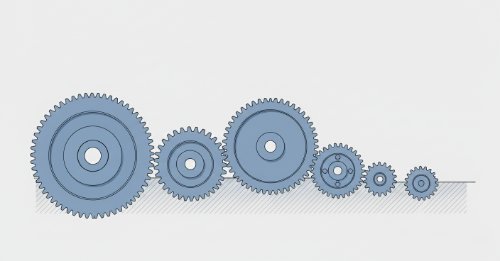2D Kinetics of Rigid Bodies by Newton's Second Law - Engineering Mechanics (Undergraduate Advanced)
45
 MEE 206: Engineering Mechanics - DynamicsMaster the principles governing the motion of engineering systems. This learning track provides a complete education in dynamics, systematically building from the kinematics of particles to the kinetics of rigid bodies and culminating in an introduction to dynamic systems and vibration. You will learn to analyse and predict how mechanical systems behave under the influence of forces.
This programme is for undergraduate students in mechanical, aerospace, civil, or related engineering disciplines. It is also essential for practising engineers and applied scientists who require a rigorous, first-principles command of dynamic analysis for their professional work. A prerequisite knowledge of statics, calculus, and vector algebra is assumed.
Upon completion, you will possess the analytical tools to solve complex dynamics problems for particles and rigid bodies using force, energy, and momentum methods. This provides the essential foundation for advanced study in mechanical design, control systems, and structural analysis, and prepares you for demanding technical roles in the engineering sector.
MEE 206: Engineering Mechanics - DynamicsMaster the principles governing the motion of engineering systems. This learning track provides a complete education in dynamics, systematically building from the kinematics of particles to the kinetics of rigid bodies and culminating in an introduction to dynamic systems and vibration. You will learn to analyse and predict how mechanical systems behave under the influence of forces.
This programme is for undergraduate students in mechanical, aerospace, civil, or related engineering disciplines. It is also essential for practising engineers and applied scientists who require a rigorous, first-principles command of dynamic analysis for their professional work. A prerequisite knowledge of statics, calculus, and vector algebra is assumed.
Upon completion, you will possess the analytical tools to solve complex dynamics problems for particles and rigid bodies using force, energy, and momentum methods. This provides the essential foundation for advanced study in mechanical design, control systems, and structural analysis, and prepares you for demanding technical roles in the engineering sector.
Master the principles governing the motion of engineering systems. This learning track provides a complete education in dynamics, systematically building from the kinematics of particles to the kinetics of rigid bodies and culminating in an introduction to dynamic systems and vibration. You will learn to analyse and predict how mechanical systems behave under the influence of forces. This programme is for undergraduate students in mechanical, aerospace, civil, or related engineering disciplines. It is also essential for practising engineers and applied scientists who require a rigorous, first-principles command of dynamic analysis for their professional work. A prerequisite knowledge of statics, calculus, and vector algebra is assumed. Upon completion, you will possess the analytical tools to solve complex dynamics problems for particles and rigid bodies using force, energy, and momentum methods. This provides the essential foundation for advanced study in mechanical design, control systems, and structural analysis, and prepares you for demanding technical roles in the engineering sector.
Course Chapters
1. Introduction4
Meaning of mechanics, dynamics, kinetics, rigid bodies; overview of the kinetic analysis techniques of different motion types for a rigid body.
Chapter lessons
1-1. Welcome
Welcome to the course and course outline.
1-3. Forces and reactions (1)28:39
2. Mass Moment of Inertia1
A review of mass moment of inertia, parallel-axes theorem and related concepts.
Chapter lessons
2-1. Overview
Summary of the need for, calculation of, and formulas for the mass moment of inertia of a rigid body.
3. General Equations of Motion1
General equations of motion of rigid bodies and their resultant equations under various kinds of motion; application of the equations under special conditions such as constrained motion and in a system of connected bodies.
Chapter lessons
3-1. Overview
Equations of motion for a rigid body.
4. Translation1
Force-acceleration analysis of the motion of rigid bodies in translation.
Chapter lessons
5. Rotation About a Fixed Axis1
Force-acceleration analysis of the motion of rigid bodies undergoing rotation about a fixed axis.
Chapter lessons
6. General Plane Motion1
Force-acceleration analysis of the motion of rigid bodies undergoing general plane motion.
Chapter lessons